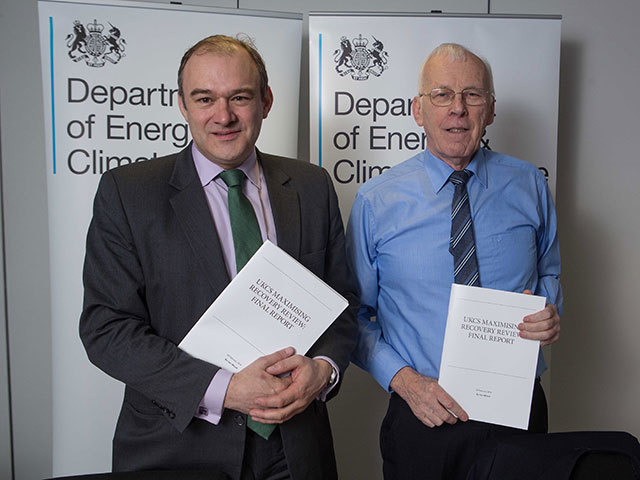
Sixty-eight pages, four recommendations and 29 action points – that is Sir Ian Wood’s prescription to cure the UK’s ailing oil and gas industry.
The industry veteran said the North Sea was at a “watershed” moment yesterday as he unveiled his final report of maximising recovery from the UK Continental Shelf.
Last night he said most, if not all of the 24billion barrels of oil which remain out there, can be reached if industry and government work together.
And he reaffirmed the key recommendation of his interim report last November calling for the creation of a new arm’s length body – paid for by industry – to make companies work together in exploration, development and production across the sector.
Sir Ian said that it should be possible to deliver at least three to four billion more barrels over the next 20 years – worth around £200billion to the UK economy.
However the existing light-touch regulatory framework was no longer suitable for an environment where there were now more than 300 fields – many of them marginal – competing for the use of an aging infrastructure.
“There is a huge prize at stake, and I believe government must implement the key recommendations, including the creation of a new regulator, as quickly as possible,” he said.
After spending eight months interviewing oil bosses, ministers and foreign regulators, he has made four key recommendations.
The main one is that government and industry immediately set up a new North Sea oil and gas regulator who will focus on securing the maximum amount of economically-recoverable oil from UK waters.
He also wants government, the Treasury and the industry to commit to a new joint strategy to maximise recovery.
Watch our highlights from the announcement of the final review here:
Ed Davey, the Energy Secretary, last night hailed the publication of Sir Ian’s review as a “seminal moment” in the history of Britain’s oil and gas industry.
He said the Government had accepted Sir Ian’s recommendations in full and would fast-track its implementation, and the new body could be partly in place by the end of the year.
Sir Ian wants the new regulator to be given additional powers to ensure that all licence holders act in a way that is consistent with maximising North Sea oil recovery, including increased collaboration between companies – particularly around access to infrastructure – and improved data sharing.
Companies who fail to act in a manner designed to maximise output from the UKCS could ultimately lose their production licences.
The regulator will also be involved in dispute resolution between companies to help improve collaboration. In addition, it will have the right to attend meetings between licence holders.
Six separate strategies were also unveiled yesterday – with 29 action points – that the new regulator will have to draw-up.
They are:
– An exploration strategy – to revitalise exploration, and Sir Ian wants well and seismic data to be shared. He said government has a particular role to play in encouraging new exploration and cited Holland, where the government takes a 40% stake in exploration wells, as an example.
– An asset stewardship strategy – to ensure operators are held to account for the proper care of their platforms and pipelines.
– A regional development strategy – to produce oil and gas on a regional, rather than solely a field-by-field basis. Licence holders will have to make their infrastructure, such as pipelines, available to producers at smaller, marginal fields under fair terms.
– An infrastructure strategy – to ensure the life of existing infrastructure is prolonged to help with the processing, transport and export of the UK’s offshore oil and gas resources,
and investment in new major infrastructure is achieved.
– A technology strategy – to ensure existing technologies are deployed to their full effect and relevant technologies are developed to maximise recovery from the UKCS.
– A decommissioning strategy – so that major assets are not decommissioned prematurely to the detriment of production hubs and infrastructure. Sir Ian wants the field life of assets to be extended for as long as economically possible.
Recommended for you
